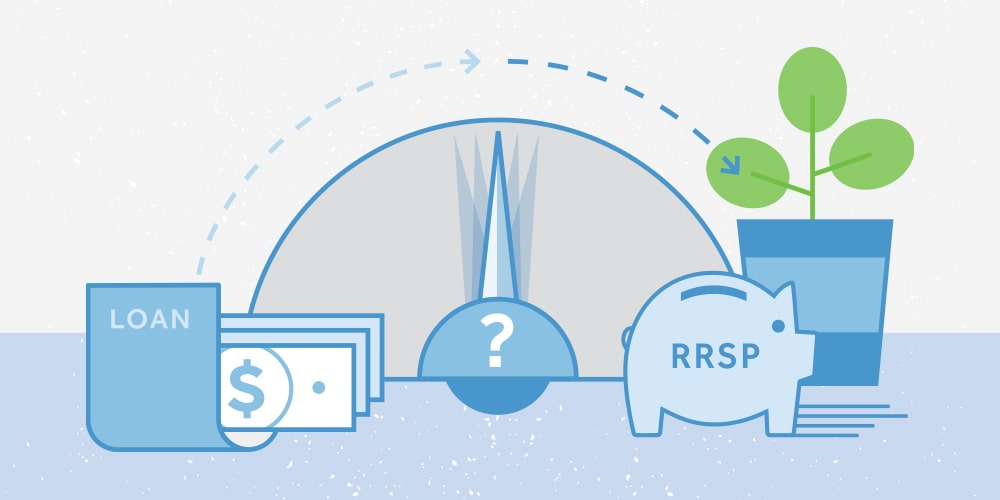The idea of borrowing money (taking on debt) to invest in savings might seem strange, but there are some scenarios when it does make sense to do just that. Especially when it comes to investing in long-term savings goals such as retirement.
A common example of when borrowing to save makes good sense is when it comes to maximizing your annual Registered Retirement Savings Plan (RRSP) contributions. If you find yourself short on cash to take advantage of your total contribution room (and the associated tax benefits) before the March 1 deadline, then taking a small loan to make up the difference can be a smart money move. We’ll explain why.
To maximize your RRSP contribution room
Even if you’re already contributing to an RRSP regularly (through an employer plan for example) you may not be maxing out your available contribution room each year.
Part of staying on top of your RRSP contributions is knowing how much room you have each year. You can contribute up to 18% of your previous year’s income or up to a maximum amount set by government (whichever is less). Even though any unused contribution room carries over into future years, not taking full advantage may put you off-track to reaching your retirement goals – not to mention losing out on the growth potential of your investment.
An RRSP loan is a good solution to keep you on track if you’re unable to contribute as much as you’d like one year. Alternatively, you could draw funds from an authorized overdraft (AOD) or line of credit if you have one available (rather than take out a new loan).
To offset your taxable income
Contributing as much as possible to your RRSP has many long-term benefits (compound interest anyone?) but the greatest short-term perk is lowering your taxable income.
If you had a high earning year (perhaps a large bonus or unexpected windfall) then investing a lump-sum into your RRSP is an efficient way to reduce the amount of tax you’d owe for that year. An RRSP loan or AOD can help you make up the difference if you don’t have enough cash available to make that lump-sum investment in time to leverage the tax benefits.
If the pros outweigh the cons
If you’re considering borrowing to invest, it’s important to weigh the financial benefits versus the debt implications. Factors you should consider are:
- Your cash flow. Evaluate your ability to repay the loan. if your current budget can absorb the additional expense and you’re able to pay it off within a year at most, a loan may be the way to go. Also, you can use any tax refund you do get to pay down your loan even faster.
- Interest rates. The growth you’d earn on your investment must exceed the amount you pay in interest on the loan to make borrowing worth it. Because the interest on an RRSP loan is not tax deductible, you should only borrow if you qualify for a low rate.
- Any existing debt. If you aren’t carrying any consumer debt (credit cards, balances on lines of credit) that’s great. But if you are, paying down that high-interest debt should be your priority.
- Your income. Depending what income tax bracket you fall into, it may not always make sense to invest extra into your RRSP. If your taxable income is on the higher end though, maxing out your RRSP can help offset what you owe.
If you’re thinking an RRSP loan might be a good option for you, or if you’re still unsure, it always helps to talk to a professional. Contact a Servus expert anytime to discuss options that suit your financial needs and goals.


